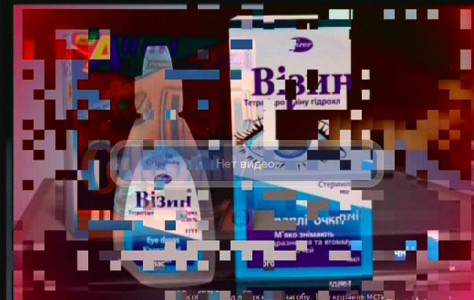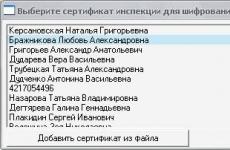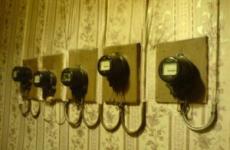Why does not the TV from the satellite dish. Why the satellite dish does not work and there is no signal
Hello, dear blog readers A man in the house.Ru. In today's article, as you probably already understood, we will consider the most common causes of a malfunction in the satellite dish and how to eliminate them.
It is no secret that the repair of satellite dishes can be done by hand. Calling a specialist for tincture may cost you unnecessarily expensive. To save the family budget, let's look at how to repair satellite system personally.
Often, after repair, there are problems with the cable. Antenna cableby means of which the “head” of the satellite dish is connected to the receiver, it can simply be interrupted or short-circuited after the next repair. It is also possible that the coaxial cable breaks along the line of the central core. To accurately determine the cause of the refusal satellite tvFirst, check the condition of the cable. Often, a visual inspection is sufficient to identify obvious violations of braid insulation, fractures and cable clips.
More precisely, you can determine the state of the cable, armed with a special device - a digital multimeter. If there is no such device in your home, then a low-voltage incandescent bulb from a flashlight and a battery will be enough mobile phone. Such a simple folk device for checking electrical circuits is popularly called the “arcade”. To check with the help of the “arcade” you need to connect the tested core to the gap of the simplest electrical circuit with a battery and a light bulb. If the light comes on - the whole conductor, and if not - there is a break. Checking the coaxial cable using a digital device, as well as using an arkashka folk notion, is simple: we check the central copper conductor and braid in turn.
A working cable should normally call back between the beginnings and ends of like conductors, but not between opposite ones. To put it simply, at the beginning and at the end of the wire the core should sound normally with the device (the arcade light comes on), as well as the beginnings and ends of the braids. It is important to note that between the braid and the core the device should not ring (the light will not come on). The resistance between these elements must be high — a few mΩ. Low resistance between the aluminum braid and the copper core of the coaxial cable core indicates a short circuit.
It is also possible that the integrity of the conductors of the cable cannot be checked in this way due to the remote location of the plate and the receiver. For this case, we can recommend using the following diagnostic technique: first, we check if there is a short circuit between the central core and the screen, and second, we intentionally close the core with shielding braid on the one hand, and on the other - with the instrument. If the device stumbles or “arc” lights up - this means that both the braid line and the core line are completely intact.
Why short circuit occurs
The most trivial variant of the occurrence of a short circuit in the cable is incorrect cable termination and incorrect connection of f-connectors. It’s no secret that novice satellite dish installers are trying to install this very dish as soon as possible, spitting on reliability and quality. Their main goal is to quickly get the cherished 500 rubles.
To prevent a short circuit, which can cause the failure of both the receiver and the LNB, it is necessary to carefully check the correctness of the cable termination. There is no particular trick in this process: you need to carefully clean the upper insulation 1.5-2 cm, remove the silver screen back, clean the central gold conductor and screw the f-connector. Then it remains only to cut the central copper conductor so that it protrudes no more than 2-3 mm from the f-connector.
The main mistake that newbies make is that they don’t draw back the hairs of the aluminum braid screen well enough. These hairs may eventually come into contact with the central copper dwelling and disable expensive equipment. In fact, a short circuit will occur, which in the worst case will “kill” the receiver. Also an error is cutting aluminum foil. It’s better to just pull it back so that the f-connector connects better and holds on the coaxial cable. In any case, it is necessary to carefully check whether there is a short circuit between the central core and the “ground” of the shielding braid. After the voltage is applied to the receiver, it will be impossible to fix anything.
Breakage of the "head" LNB
It is also very common malfunction "heads" LNB. Atmospheric precipitation, short circuit, and overvoltage are the main reasons for the failure of satellite dish converters. To check the breakdown of a specific LNB, simply unplug the disk (if you have, of course, several converters) and connect the heads one by one directly to the receiver. So in a simple way You can accurately determine the faulty converter.
Despite the fact that the services of a satellite television operator are used by a person, there are often situations where, despite the paid content, there are problems with the signal - it simply disappears. What to do in this case is not difficult to understand, but it is important that the instructions were used specifically for a particular operator. Of course, companies work according to similar principles, and the reasons why they don’t show the channel or all the channels are almost always identical, and therefore they can be solved according to the same scenario.
Since today the most popular operator is Telecard, we’ll talk about it. Signal problems are rather rare there, although satellite equipment, to be honest, is not the most powerful among analogs. Nevertheless, even this fact can be corrected with a larger satellite dish. If there was a signal, but at some point it disappeared, then you need to find out the reason and remove it.
Widget from SocialMartThe reasons for the appearance of the words "No signal" on the Telecard
The reasons that can provoke an inscription on the TV screen saying that there is no signal are completely different. They are usually associated with satellite equipmentbut it often happens that the case is a faulty TV. Check it out is easy. Connect the equipment to another TV, and if the inscription remains, then it is really a failure of the receiver, satellite dish or something with a cable - there are a lot of reasons.
When the breakdown is not lost, then the trouble is on the TV, and there is nothing to sin on the operator satellite broadcast. Do not worry - just take the TV to the workshop to be repaired. But the most common reasons for the appearance of the inscription "No signal" are divided into two groups:
- External causes are circumstances that are independent of receiving equipment and rarely can be removed by the user.
- Internal causes - Circumstances that can be corrected by the user, as they relate to equipment breakdown.
First of all, it is necessary to find out exactly how the breakdown occurs, and whether there are opportunities to fix it. If, for example, the reason is in bad weather, then you should just wait it out. But if you live in a region where the weather is always bad, it is better to buy equipment that can withstand such a burden to enjoy your favorite shows.
 External causes of bad signal
External causes of bad signal
If they wrote on the TV that there is no signal, it means that it is urgent to find out what is the matter, so as not to ruin one's nerves, and, of course, not to spoil the equipment, looking for flaws in it. Here are the most common causes of external nature that affect signal reception. The operator himself is very good, because the signal may not bring down such a large number of reasons, however, there are several:
- Preventive work.
Channel prevention is a common phenomenon that is used to improve services. Of course, it creates some inconvenience for users, but they are quickly forgotten when you see significant improvements. Therefore, it is possible to suffer several hours until the work is completed, especially since they are being done on a working day, and from morning to dinner, so when most viewers can sit at the TV, it will already work in normal mode. Check whether there is a channel prevention, and when it will be done on the provider's site right now. But you can logically guess, because the signal is absent on all channels at once.
- Weather.
God does not ask for good weather, and if it rains, you just have to wait until they pass. As a rule, rain does not affect the signal too much, but much depends on the signal strength. If it is of high quality, then everything is much simpler, but if it is about 50% of power and quality, then even a strong wind may interrupt. But when the snow falls bad signal guaranteed, since snow has a bad habit of sticking to the antenna and blocking the broadcast. To deal with this disaster, you just need to go outside and gently remove the sticky snow from the details. If this does not help, then the settings are accidentally lost. But it will have to be solved by other methods, calling the master.
- Changed the path of the signal.
This problem is relevant when the Telecard company reconfigures its equipment, adds or changes a satellite, and therefore, users also have to make changes to the setting, otherwise the signal will not pass. Interference on the way to the antenna, too, cause inconvenience, because they interrupt the signal, because before you panic, determine the possibility of installation.
 Internal reasons why channels do not work
Internal reasons why channels do not work
After going through all the causes of external nature, and without revealing any breakdowns among them, the thought may appear that the matter is in the equipment itself. Here are one of the most important reasons:
- The plate got off.
As with any technique, the plate deforms over time, may partially move, and so on. You can check this by slightly pushing it, and if the device is “walking”, then it’s time to take action. You can fix this damage if you turn the plate in different directions, trying to catch the signal. And when this procedure is successful, tighten the fasteners. But it is better not to conduct experiments, and as each user writes on the forum, call the wizard.
- The cable has been damaged or the connection has failed.
The cable with time can be damaged, because one part of it is on the street and the other in the room, which does not always have a positive effect on its service life. That’s why the company wrote in the instructions that it’s better to pay more, but to buy a better cable that will last longer. Therefore, if such a nuisance has occurred - unscrew all the connections and replace the damaged part.
- Failure of the receiver.
If there is no signal on the Telecard, it is quite possible that it is a failure of the receiver. A lot of things depend on this equipment, including the signal quality. If the image is “frayed”, does not show both in bad and in good weather, and selects the same error on different channels, then you will have to carry the receiver for repair. This is the most expensive part of the kit, because I would like to save it, and not to buy a new model.
In this article we consider the most common causes of malfunctions in the satellite dish and ways to eliminate them.
How to check coaxial cable
Often, after repair, there are problems with the cable. The antenna cable, through which the satellite head “head” is connected to the receiver, can be simply interrupted or short-circuited after the next repair. It is also possible that the coaxial cable breaks along the line of the central core. To accurately determine the cause of a satellite TV reception failure, first, check the condition of the cable. Often, a visual inspection is sufficient to identify obvious violations of braid insulation, fractures, and cable clips.
More precisely, you can determine the state of the cable, armed with a special device - a digital multimeter. If there is no such device in your home, then a low-voltage incandescent bulb from a flashlight and a mobile phone battery will suffice. Such a simple folk device for checking electrical circuits is popularly called the “arcade”. To check with the help of the "arcade" you need to connect the test core to the gap of the simplest electrical circuit with a battery and a light bulb. If the light comes on - the whole conductor, and if not - there is a break. Checking the coaxial cable using a digital device, as well as using an arkashka folk notion, is simple: we check the central copper conductor and braid in turn.
A working cable should normally call back between the beginnings and ends of like conductors, but not between opposite ones. To put it simply, at the beginning and at the end of the wire the core should sound normally with the device (the arcade light comes on), as well as the beginnings and ends of the braids. It is important to note that between the braid and the core the device should not ring (the light will not come on). The resistance between these elements must be high — a few mΩ. Low resistance between the aluminum braid and the copper core of the coaxial cable core indicates a short circuit.
It is also possible that the integrity of the conductors of the cable cannot be checked in this way due to the remote location of the plate and the receiver. For this case, we can recommend using the following diagnostic technique: first, we check if there is a short circuit between the central core and the screen, and second, we intentionally close the core with shielding braid on the one hand, and on the other - with the instrument. If the device stumbles or “arc” lights up - this means that both the braid line and the core line are completely intact.
Why short circuit occurs
The most trivial variant of the occurrence of a short circuit in the cable is incorrect cable termination and incorrect connection of f-connectors. It’s no secret that novice satellite dish installers are trying to install this very dish as soon as possible, spitting on reliability and quality. Their main goal is to quickly get the cherished 500 rubles.
To prevent a short circuit, which can cause the failure of both the receiver and the LNB, it is necessary to carefully check the correctness of the cable termination. There is no particular trick in this process: you need to carefully clean the upper insulation 1.5-2 cm, remove the silver screen back, clean the central gold conductor and screw the f-connector. Then it remains only to cut the central copper conductor so that it protrudes no more than 2-3 mm from the f-connector.
The main mistake that newbies make is that they don’t draw back the hairs of the aluminum braid screen well enough. These hairs may eventually come into contact with the central copper dwelling and disable expensive equipment. In fact, a short circuit will occur, which in the worst case will “kill” the receiver. Also an error is cutting aluminum foil. It’s better to just pull it back so that the f-connector connects better and holds on the coaxial cable. In any case, it is necessary to carefully check whether there is a short circuit between the central core and the “ground” of the shielding braid. After the voltage is applied to the receiver, it will be impossible to fix anything.
Breakage of the "head" LNB
It is also very common malfunction "heads" LNB. Atmospheric precipitation, short circuit, and overvoltage are the main reasons for the failure of satellite dish converters. To check the breakdown of a specific LNB, simply unplug the disk (if you have, of course, several converters) and connect the heads one by one directly to the receiver. In this simple way, you can accurately determine the faulty converter.






